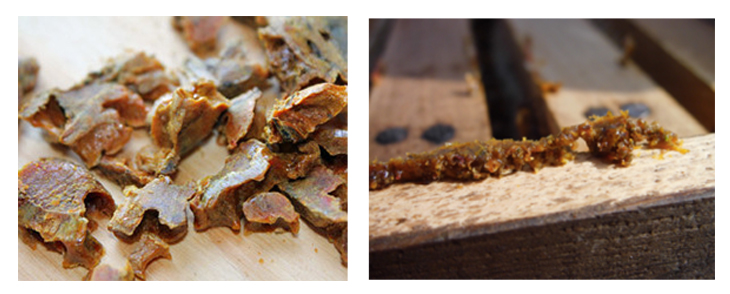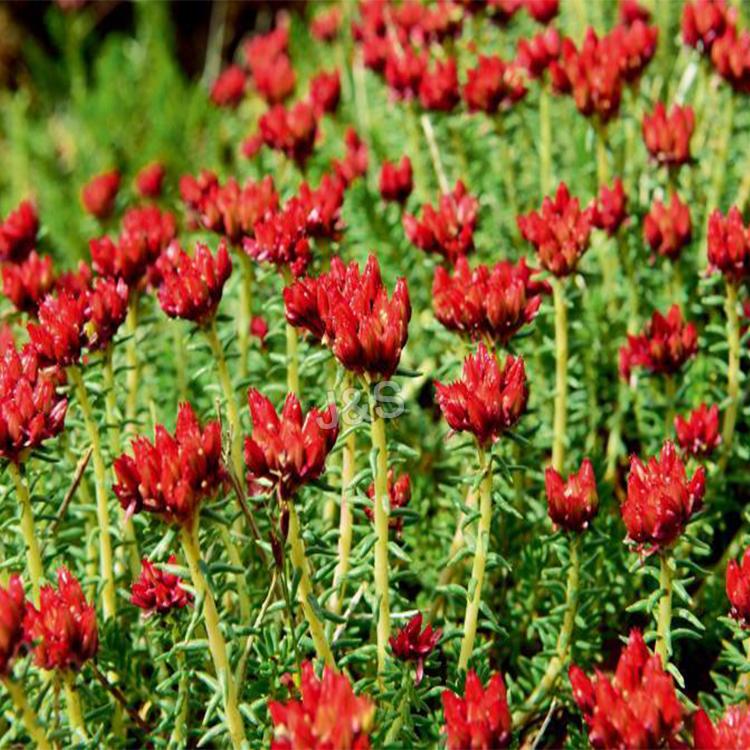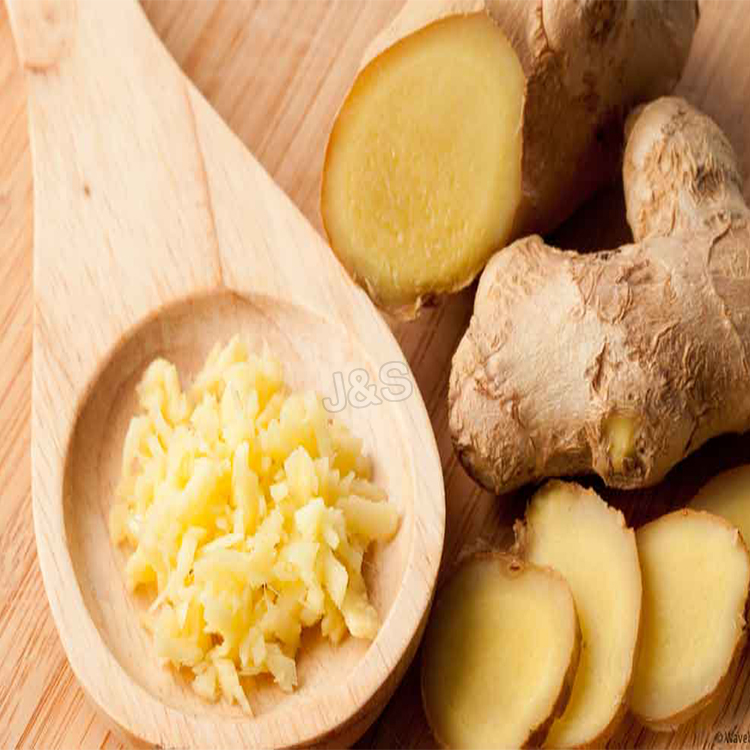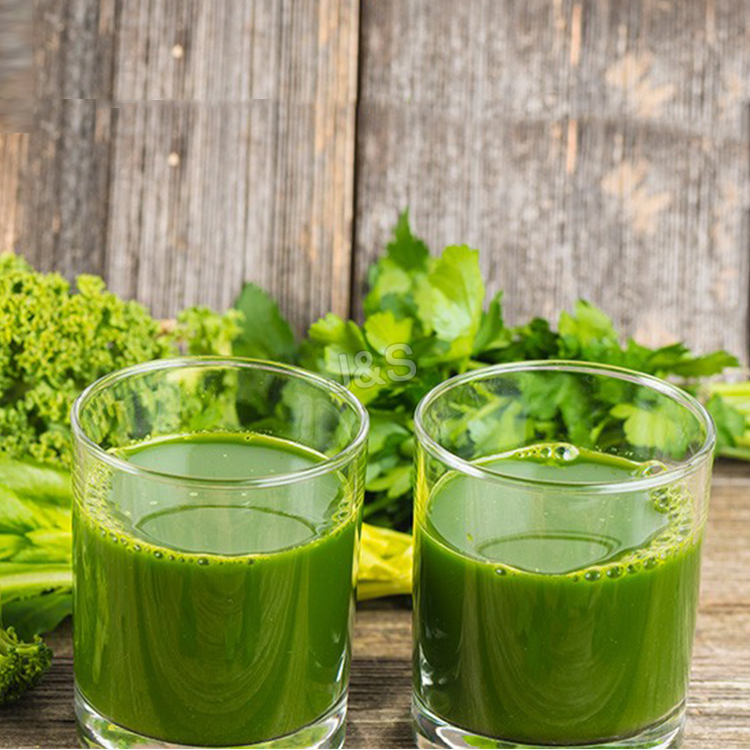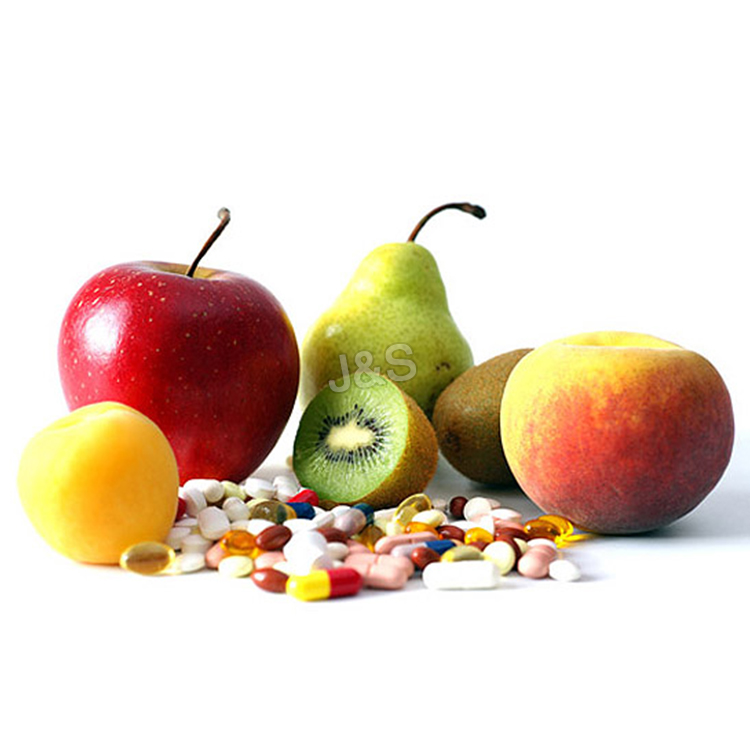12 Years Factory wholesale Propolis block Supply to Canada
12 Years Factory wholesale Propolis block Supply to Canada Detail:
[Products Name] Propolis block, pure propolis, raw propolis
[Specification] Propolis content 90%,95%
[Gerneral feature]
1. Low antibiotics
2. Low PAHs, can approve to 76/769/EEC/German:LMBG;
3.Organic certified by ECOCERT, according to EOS & NOP organic standard;
4.Pure natural propolis;
5.High content of flavones;
6.Low temperature extracted, retain high activity of all nutritions;
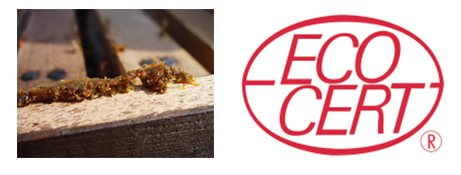
[Packaging]
1. 1kg/aluminum foil bag, 20kgs/carton.
[How to get it]
First, we collect raw propolis from beehives, then extract by low temperature with ethanol. Filter and concentrate, we get the pure propolis block at 90% to 95%.
[Introduction]
Propolis comes from the substance like natural resin, which is collected by the bees from exudates of plants branches and bud the chemical substances of Propolis are found to be various, such as beeswax, resin, incense lipids, aromatic oil, fat-soluble oils, pollen and other organic matter. Studies have shown that the source of propolis resin in material has three types: bees collected plants secreted fluid, secretion in vivo metabolism of bee, and involvement in the process of forming the material.
We can supply Propolis Extract with food-grade and medicine-grade .The raw materiall is came from non-polluting food grade propolis .Propolis extract was made of high-grade propolis. It maintains the propolis effective ingredients during the procedure of extraction under constant low temperature , taking off the useless substances and sterilization.
[Function]
Propolis is a natural product processed by bees mixed with glutinous and its secretion.
Propolis contains more than 20 kinds of useful flavonoids, rich vitamins, enzymes, amino acids and other microelements, etc. Propolis is called “purple gold” owing to its valued nutrients.
Propolis can remove free radical, lower blood sugar and blood fat, soften blood vessels, improve micro-circulation, enhance immunity, anti-bacteria and anti-cancer.
Product detail pictures:
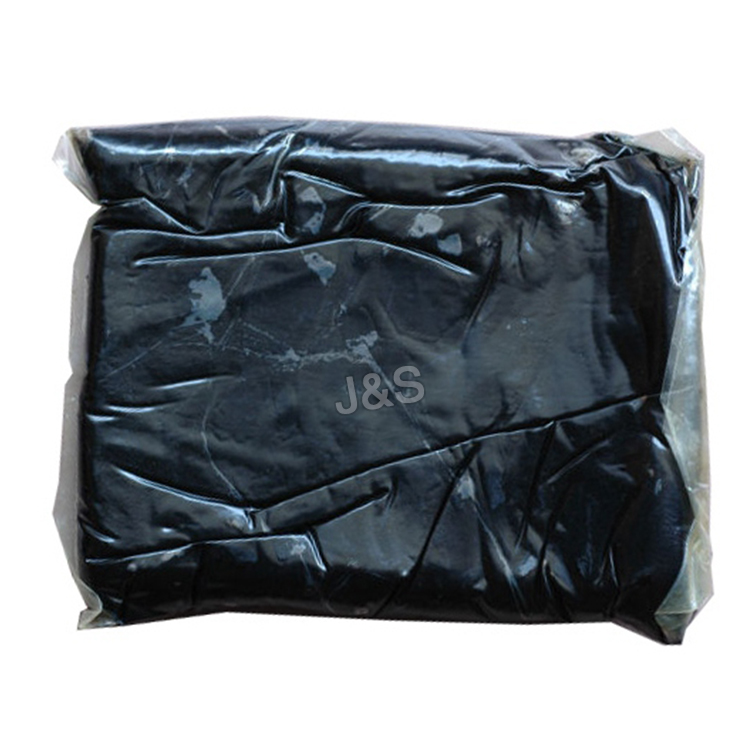
Related Product Guide:
The shopper satisfaction is our primary focus on. We uphold a consistent level of professionalism, quality, credibility and repair for 12 Years Factory wholesale Propolis block Supply to Canada , The product will supply to all over the world, such as: Thailand, USA, Bhutan, We have been perfectly devoted to the design, R&D, manufacture, sale and service of hair products during 10 years of development. We have introduced and are making full use of internationally advanced technology and equipment, with advantages of skilled workers. "Dedicated to providing reliable customer service" is our aim. We are sincerely looking forward to establishing business relationships with friends from at home and abroad.
Alternative Natural Sweeteners for Diabetes
Click Hare….https://youtu.be/iMJgsd-QKDw
Used as a sweetener and medicine for a thousand years by native Guarani Indians, Stevia Rebaudiana is perhaps the only known plant to worry the sweetener industry today. Stevia leaves contain steviosides, which are chemicals that cause Stevia to taste sweet. Stevia is 200-300 times sweeter than white sugar.
In China, Korea and Japan Stevia extract Stevioside is used as a table top sweetener because it has no calories, no carbohydrates and no fat and is many times sweeter than sugar. In the United States, Stevia is sold only as a dietary supplement.
In addition to being a sweetener, Stevia is considered to be hypoglycemic, hypotensive, diuretic, cardiotonic, and tonic. The leaf is used for diabetes, obesity, cavities, hypertension, fatigue, depression, sweet cravings, and infections.
Stevia is an exceptional aid in weight loss and weight management because it contains no calories and reduces one’s craving for sweets and fatty foods.
Around 1970 Japan began to prohibit the use of artificial laboratory made chemical sweeteners, due to health concerns. Convinced of the safety of Stevia and Stevioside it approved Stevia and Stevioside as sweeteners and flavor enhancers for food use in Japan. This move intensified the already ongoing Japanese studies of Stevioside for commercial production and use. By 1977 companies started extracting Stevioside on a commercial basis in Japan.
Lots of countries in the world already use Stevia. The only difference is in the way they declaring it; some call it dental health product, others food supplement or just regular sweetener.
The release of Stevia to be not only imported into this all the countries of the world, but also commercially grown, opens the door for the future common availability of this herb in every supermarket and as an additive to processed food in the world. While the battle to market Stevia as an alternative sweetener to sugar is far from over, the time will come sooner than later.
If you fancy finding more information about stevia and other organic natural herbal products, please visit [https://www.chineseteaandherbs.com]
We simply wish to share valuable healthcare knowledge with people. Of course there are also many products you can buy online, if you wish.
Article Source: https://EzineArticles.com/expert/Nick_Wang/163549
Article Source: https://EzineArticles.com/951758
Faacebook:
https://plus.google.com/u/0/b/104421791184706831015/114589584669716768568?pageId=104421791184706831015
https://www.youtube.com/channel/UCI9QTF7aEFg4lXVW28nwKtQ What happens to your body if you don’t have intimate relationship for 7 days or more: https://www.youtube.com/watch?v=rYu6GnlX3Q0&t=32s
30 second shower can burn your fat
WITH THIS OIL YOUR HAIR, EYELASHES AND EYEBROWS GROWS RAPIDLY! https://www.youtube.com/watch?v=vUUC0WJI3q4&t=1s
Make Your Liver 20 Years Younger, Just Consume This Fruit
10 Vegetables You Can Buy Once And Regrow Forever!
Warning Signs of Low Progesterone and What to Do About It
Alternative Natural Sweeteners for Diabetes
✔ ✔ Best Way Of Drinking Water ! ✔ ✔
https://www.iitutor.com
Condensation polymers are formed when monomers join together, and in the process also form a separate small molecule such as a water molecule. The ends of the monomer molecules must have functional groups that can join with other functional groups on neighbouring molecules.
Condensation polymerisation is the process in which two monomers combine with the elimination of a smaller molecule. One way that two different monomers can combine and in doing so lose a molecule of water and represents condensation polymerisation. This process continues and each remaining end joins with another monomer—each time lengthening the chain. One way to think of this is a “head-to-tail” joining.
Synthetic condensation polymers include nylons and polyesters. Natural condensation polymers include cellulose, cotton, wool, and silk.
Cellulose is a complex carbohydrate or polysaccharide. It is the most abundant biopolymer in nature. Carbohydrates consist of molecules containing C, H and O atoms. Carbohydrates contain many alcohol functional groups.
• Cellulose consists of long chains of β-glucose monomers.
• Glucose is an example of a simple carbohydrate or monosaccharide.
Structure of glucose :
Glucose (C6H12O6) is a ring molecule. The carbon atoms in the ring are numbered as shown. The –OH functional groups may be orientated above or below the plane of the ring. These different orientations at C, produce the alpha and beta forms of the glucose monomers.
• Glucose is an organic compound
• Ring can open up in solution to form a straight-chain structure. Open and chain forms are in equilibrium that cause glucose to exist as anomers, β-glucose and α-glucose.
Biopolymer is a naturally occurring polymer such as cellulose, starch, gluten, DNA and protein.
Formation of cellulose:
Cellulose is a condensation polymer which is formed when glucose monomers condense together through beta-1,4-glycosidic bonds. This involves a reaction between the –OH groups at the C1 and C4 carbons of adjacent glucose molecules.
The process begins by the condensation reaction between two glucose monomers to form a beta-maltose dimer. A water molecule is eliminated during this reaction. More glucose monomers condense and the chain grows until about 10 000 glucose monomers are linked in long, unbranched, ribbon-like strands.
Strong hydrogen bonding exists between –OH groups of neighbouring, close-packed strands. This produces a water-insoluble polymer with great strength and rigidity. Plants use cellulose as a structural carbohydrate for their cell walls.
The enterprise has a strong capital and competitive power, product is sufficient, reliable, so we have no worries on cooperating with them.

